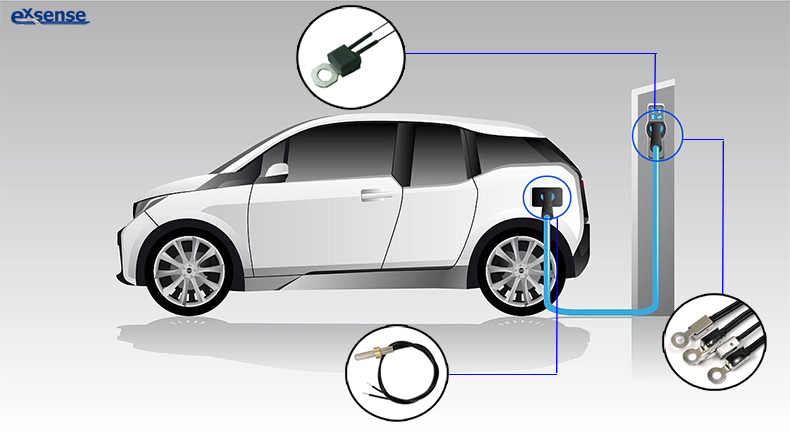With the rapid growth of China’s electric vehicle (EV) market in recent years, charging infrastructure construction has entered a phase of accelerated expansion. Ensuring the safety of charging equipment (charging stations) has thus become a critical industry priority. During operation, core electronic components and power modules generate significant thermal effects, particularly in high-power fast-charging scenarios, where heat accumulation rates can reach 2-3 times those of conventional operating conditions. Prolonged exposure to high temperatures reduces charging efficiency, accelerates component aging, and risks thermal runaway. This highlights the indispensable role of temperature control in charging station design.
How Does NTC temperature sensors Work?
During regular EV charging, the control module processes data from NTC temperature sensors through fusion filtering and CNN-based analysis to make intelligent decisions. When an NTC sensor detects elevated internal temperatures (e.g., exceeding the optimal operating temperature by 50°C), the thermal controller employs PID algorithms to adjust the fan motor speed, enabling forced-air cooling. This drives heat dissipation through rotating fans, lowering internal enclosure temperatures and preventing equipment damage.
The preset safety temperature threshold for charging stations is typically 85°C. If an NTC sensor detects component temperatures surpassing this limit, the control module immediately disconnects the charging power supply to prevent safety hazards.
NTC temperature sensors Installation Locations
NTC temperature sensors are strategically installed across critical components to ensure comprehensive thermal monitoring:
- Power Module Interior
Mounted on power devices (e.g., IGBT, SiC MOSFETs) or heat sinks to monitor temperatures during AC-DC conversion, preventing overheating failures.
- Charging Gun Head and Cable Connection Points
Embedded near metal contacts within the charging plug to detect temperature spikes caused by high-current transmission, mitigating risks of melting or fire due to excessive contact resistance.
- Control Module PCB
Positioned adjacent to the MCU or power driver circuits to safeguard core control logic from thermal interference, avoiding malfunctions or system crashes.
- Cooling System Ducts or Liquid Cooling Pipelines
It is installed at air vents or liquid return pipes to evaluate cooling efficiency and dynamically adjust fan speeds or coolant flow rates.
Future Trends
NTC temperature sensors act as the “sensory network” for the thermal management of charging stations. They enable dynamic temperature regulation by precisely monitoring heat-critical zones and integrating intelligent algorithms. Future advancements will focus on higher precision, enhanced reliability, and compatibility with emerging technologies such as 800V ultra-fast charging platforms, liquid cooling, and thermoelectric (TEC) systems. These innovations will optimize thermal control efficiency, ensuring safer and more robust charging infrastructure.

